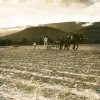calsfoundation@cals.org
Overflow National Wildlife Refuge
Overflow National Wildlife Refuge was established on November 6, 1980, to protect one of the remaining bottomland hardwood forest tracts in the Lower Mississippi River Valley (LMRV). Located in Ashley County, it is part of the National Wildlife Refuge System administered by the United States Fish and Wildlife Service under the Department of the Interior. These bottomland forests are used by a huge contingent of migratory birds including waterfowl, wading birds, raptors, and songbirds. Original refuge land acquisitions were limited to forested bottomlands only, as they were in eminent danger of being drained and cleared for agriculture. The refuge has been officially designated a globally Important Bird Area (IBA) by the American Bird Conservancy.
Most of the land within the refuge boundary is classified as stream floodplain. Elevations vary from ninety to 110 feet above mean sea level. The western boundary follows the 110-foot contour along the escarpment separating the Mississippi Alluvial Plain (Delta) from the West Gulf Coastal Plain. A sixty-seven-acre tract and four smaller tracts above the 110-foot contour will eventually serve as ecological benchmarks demonstrating natural forest succession in contrast to adjacent privately owned timberlands. In 1991, an expansion plan was developed for an additional 8,000 acres to be added to the original land base, a large part of which was agricultural land. As of 2008, the refuge included a total of 14,510 acres within a proposed 18,700-acre project area.
The Overflow Creek watershed encompasses approximately 153.5 square miles (99,440 acres). The creek is a major tributary of Bayou Bartholomew, which it intersects a short distance below the state line in Louisiana. The habitat and the adverse impacts upon it closely parallel other forested habitats within the LMRV in Arkansas and north Louisiana. Several segments of the stream have been altered by private landowners. These alterations consist of levees, weirs, road crossings, drainage ditches, and channel excavation. Channel excavation of tributary streams has increased the frequency and duration of flooding of the refuge woodlands. The construction of catfish ponds and the advent of large-scale land leveling on lands east of, and adjacent to, the refuge have similarly impacted the hydrology of the watershed.
Overflow’s tree species include willow oak, overcup oak, and other species typical of bottomlands in the LMRV. Bald cypress and water tupelo are found in and along stream channels, the deeper sloughs, and Overflow Creek. Loblolly pine and upland hardwoods occur on the higher elevations along the western boundary.
Where the bottomland hardwoods have not been cleared, the primary soil type is Perry Clay; a hydric soil highly impervious to water percolation. There are inclusions of silty clays, such as Portland Clay, on the higher elevations, and as elevation increases, Hebert silt clay is a prominent type. On the highest elevations, Rilla sandy loam is the dominant soil type.
Wildlife populations inhabiting Overflow include various waterfowl species, wading birds, and shorebirds; resident mammals typical of bottomland habitats, including black bears; and various amphibians and reptiles, among them the American alligator. When springtime backwater flooding occurs, Overflow functions as a huge nursery for spawning fish of every species indigenous to the Bayou Bartholomew basin. The most abundant are bowfin, gar, carp, both largemouth and smallmouth buffalo, and, to a lesser degree, largemouth bass, crappie, bluegills, and other sunfish. There has been active eagle nesting with successful reproduction on Overflow since the late 1990s. Peak populations of eagles in winter tend to appear when waterfowl densities are at their highest levels.
For additional information:
Butcher, Russell D. America’s National Wildlife Refuges: A Complete Guide. Lanham, MD: Roberts Rinehart Publishers, 2003.
Lake Lewis
Overflow National Wildlife Refuge





Comments
No comments on this entry yet.